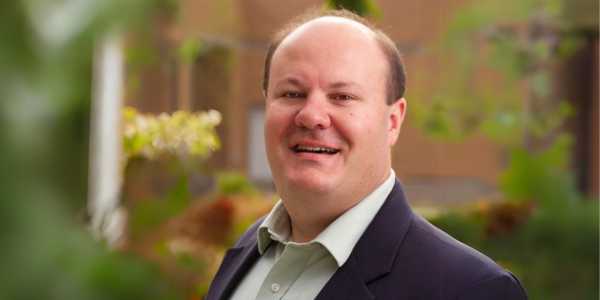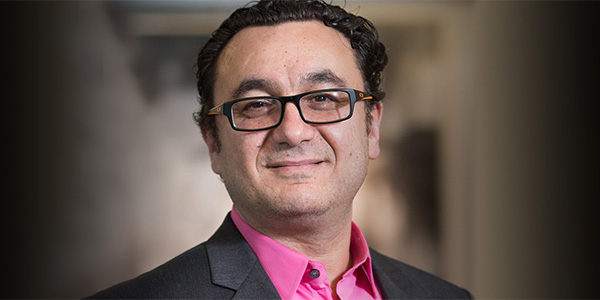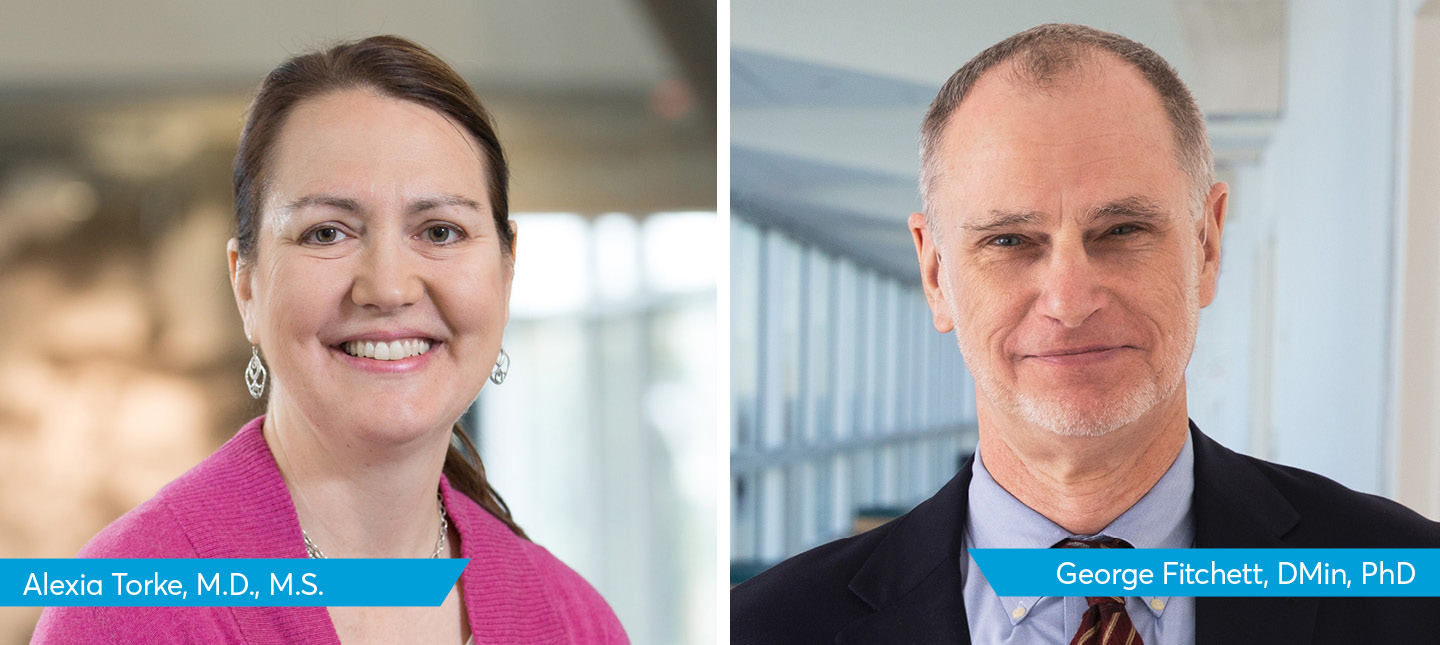Transcript
Phil Lofton:
So what was that summer like before you quit soccer when you were really taking care of your grandma? Like, what was it like as a, as a college aged kid stepping into that for the first time?
Mindi Winnie:
I mean, you know, I guess I knew, I knew she had Alzheimer’s, but I did not understand what in the world Alzheimer’s was. You know, it’s like, yes, I just thought of it as this health condition, but I did not understand it by any means. So, I think for me that summer was like finally just understanding yes, what I’m going through, but what my grandfather lives with day in and day out. And now, you know, I, wish I appreciated my mom a little bit more. We’re so much alike, you know, so I think moving down here has been the best thing for our relationship cause we’ve been given space. Um, but we were so very much alike.
But you know, just also understanding like, okay, my mom is working full time and then, you know, I mean before she even goes home at night, she’s stopping into my grandparents’, making them dinner. Like we would have to come into my grandparents’ house and eat dinner nearly every single day if we wanted to eat, cause why would she go there, make dinner, and then come home and make dinner? But just this appreciation I guess for what they’re going through. But I think for me it was the first time that I understood like, “She’s really regressed to a point where she cannot bathe herself, cannot dress herself. She has to be told to get up, you know, and out of bed and help physically help her out of bed and, you know, actually dress her and put her pants on.” And you know, it’s, it, it was just, I couldn’t, I can’t even put it into words. It was so heartbreaking.
Phil Lofton:
Imagine a group of 16 million people.
That’s a number on a scale that might be almost mind-boggling, so let’s put it in a bit of a better perspective.
A state with 16 million people would be the 5th largest state in the United States. If this group created its own country, its population would be larger than 161 nations.
Hands Across America, the event that attempted to create a chain of people holding hands across the United States, only took 6.5 million people.
If these 16 million people held hands, they would be able to stretch easily from Seoul to Moscow, with people to spare.
These 16 million people are the unpaid caregivers of individuals with Alzheimer’s disease and dementia, according to the Alzheimer’s Association, and as we’ve already discussed this season, that number is growing larger and larger every day.
These caregivers aren’t a homogenous group, either. Two-thirds are under the age of 65, and a quarter of them also provide care for their own children, placing them in the population group known as the sandwich generation – meaning they care for, and often bear the financial and emotional burdens, of both the generation above and below them.
Their lives are, to put it simply, much harder than non-caregivers, and the strain of that hardship puts them at higher risk for suicide, depression, chronic illness and death.
They miss work, are skipped over for promotions, and often have to reduce their hours or leave the workforce altogether, in order to take care of their loved one.
Today, we’ll talk about some of the struggles that caregivers face, focusing quite a bit on the unique challenges they encounter when it comes to decisions they have to make for their loved one.
Welcome to the Problem, I’m your host Phil Lofton.
[THEME]
Meet Dr. Nicole Fowler, a Regenstrief scientist, and an expert in caregiver decision making.
Nicole Fowler:
So I think I would probably define my work as recognizing that as we age, there’s multiple people who help us through that journey. And sometimes they’re paid professionals, like social workers and doctors and nurses or care coordinators, but a lot of times they’re our spouses and our children and our neighbors and our friends. And I think first and foremost what I do is I try to think about who is part of the network of an older adult who can help them age well and also experience that journey in a positive way with them.
So I think that’s at a very high level how I would define some of the, the science that I do. In particular, I focus a lot on how we can support family members of older adults in their role as helping that person age we. And in particular when caregivers start to lose some of their cognitive abilities where they’re able to think through some things distinctly on their own how can we help support family members in their role as helping that other person think through things like medical decisions or where they might live the rest of their lives or how they might get the care that they need.
Phil Lofton:
So why have you kind of pursued that as your career?
Nicole Fowler:
I think mainly because I had an experience growing up where I actually just sort of assumed that as people age they had a huge network of people around them who loved and cared about them and who would work together as a unit to make sure that people got what they needed when they needed it. And when I learned that that wasn’t the experience that everybody had, I felt like it was something that I wanted to understand a little bit more about, about building systems that would try to ensure that. Because obviously it’s not possible for everybody to live next door to mom and grandma. It’s not the way that we, we live anymore, but could we help change the way that we age in communities and provide care to folks and not just medical care, but social support in a way that would mirror some of those kind of old familial networks?
Phil Lofton:
Nicole’s work has, in the past several years, moved forward the conversation on decision support for caregivers of older adults.
In particular, she’s worked quite a bit on ways to better help caregivers through one of the most stressful parts of their role in their loved one’s life – helping make medical decisions.
Nicole Fowler:
Yeah, I think you know, we’ve been studying the trajectory of Alzheimer’s disease and related dementias for long enough now to appreciate the fact that people live with this disease for years before they die. I think right now the average life expectancy for somebody with Alzheimer’s disease and dementia is about eight to 11 years from the time of diagnosis. But that can be incredibly variable. Some people can live 20 years with a diagnosis; some just a few. But nevertheless, kind of along that journey you know, from, from diagnosis until death, there is a variety of different touchpoints and decision points that happen.
And we know from our work with caregivers that being the primary decision maker, or at least being even involved in the decision making for somebody else about these important life decisions, like, “Where do I live?” You know, “Do I stay at home? Do I move into a nursing home?” You know, “Do I treat that condition that has newly come up? How do I continue to treat the things I’ve always had. Does that change?” We know that caregivers struggle with that. I mean I think our work and a work of others have documented that the role of being a decision maker for somebody else is hard.
And so I think what we’ve tried to do is design a series of interventions that help support and empower the caregiver to think about how making medical decisions on somebody else’s behalf, um can be tailored based on what they think is important for that person’s values and goals of care. And one of the areas that we’ve focused on has actually been around cancer screening. Because as I mentioned, folks with Alzheimer’s and dementia can live years with that disease and thinking about cancer screening–which is a really important preventive procedure for throughout people’s lifespan. And we’re oftentimes told “get your mammograms”, “get your colonoscopies.”
But then there’s also a certain point in an inflection point where maybe the risks and harms of those treatments actually become more palpable than the actual benefits. And so we’re trying to think how best to support caregivers. So we’ve developed evidence-based decision aids in particular. One is around mammography screening that is aimed at caregivers of older women with dementia to not only help them reflect on what would be important values for their loved one and goals of care, but also to give them some real information about what the benefits and risks are for a mammogram for an older woman with dementia.
Phil Lofton:
And I think there’s a good public consciousness on what the benefits of a mammogram are, but for a person with Alzheimer’s Disease or dementia or cognitive impairment, what are the risks? Why is this something that’s worth pursuing? Shouldn’t everyone just get a mammogram?
Nicole Fowler:
Mm-Hm. So I think we’ve learned over the years not just for women with Alzheimer’s, but older women in general who may have a competing health condition that they may not actually have a life expectancy long enough to be able to achieve a benefit from a mammogram. Or they may not be strong enough or physically well enough to be able to treat the cancer even if it were found. They may not be wanting to. So oftentimes what we do, um, in our decision aids that helps support caregivers is to, um, certainly reflect on the emotional aspects about how it’s really hard to make decisions for somebody else. And doing more doesn’t always mean that that’s the best route. And so we kind of acknowledge that and honor that. But then we also talk about the fact that a mammogram is potentially a first step in a series of events. And so we help them think through what those series would be. So for example you know, if she gets a mammogram and they find that it’s abnormal, you may be asked to bring her back to have a biopsy. Is that something you’d be willing to do? If the biopsy shows that she has, uh, cancer, do you feel compelled to then make a decision about, you know, surgical or chemotherapy? And do think that she’d be able to withstand that treatment? So we oftentimes will give them the sort of full scope of information about what each decision might mean in the context of what they think their loved one would want or be able to do.
Phil Lofton:
But it’s important to say that while some of the difficult decisions that caregivers have to make can’t really be anticipated ahead of time, some can!
Planning ahead, having conversations between patients and caregivers is such an important process for caregivers of older adults with Alzheimer’s disease and dementia – and not just about the most dire medical treatments and procedures.
Dr. Lexy Torke is an expert in doctor-patient communication, as well as healthcare and spirituality. She’s a Regenstrief scientist, as well as the Director for the Evans Center for Healthcare in Spirituality at IU health.
Lexy Torke:
When a patient is early in the course of Alzheimer’s Disease, it is important to ask them about their goals and values, and do what we call advanced care planning, which is thinking about the kind of treatment that they’re going to want in the future. And we often think of advanced care planning as being primarily about the kind of care you would want later on when you’re unable to decide. So whether a person might want to be in the ICU, would accept something like a ventilator or might at some at some point want hospice. And that’s very important. There is actually a growing awareness that there are other things that should be talked about as well, such as where the person would prefer to live, if they can choose, what’s going to be most important to them in their day-to-day life. And even things like planning for finances or planning when they’re going to stop driving. So it’s really good to have all of those conversations early. And as time goes on, then we, what we try to do is listen to the patient’s voice whenever possible. So even later in dementia, even though the patient may not be able to understand certain highly complex things like finances, their preferences still do matter. And we try to honor their preferences whenever it’s possible and whenever it doesn’t get in the way of their own best interests. And this can be really hard. So for example, someone with moderate dementia might still want to drive their car even though at an earlier time they would’ve understood that someone whose dementia is that bad probably shouldn’t be driving. And so there are times when the caregivers and physicians have to step in. And that’s a really hard process and I think that the distress that can cause patients can be mitigated or reduced by having the conversations early. But it’s true that at the end stages of dementia, the patient is no longer able to express preferences and sometimes even to speak. And then their quality of life and comfort become the most important thing. And people can still indicate if there’s something they want we try our best to use strategies to identify if the person with dementia is in pain or might be hungry, um or might have another need. So it’s still so important to continue to consider that person’s wellbeing and the kinds of things they want. But of course, high-level decisions about medical care then are made entirely with the patient’s family member or other caregiver.
There are quite a few different framing structures, paradigms, or forms out there to help give patients and caregivers some shape to these conversations.
There’s the POLST form, that helps inform health systems of end-of-life preferences related to things like feeding tubes, resuscitation, and more.
There’s the Respecting Choices model, used by Dr. Torke in an ongoing study, that helps care providers lead conversations with patients and caregivers to clarify wishes and preferences, or Five Wishes, a model that helps guide families and individuals through the process of thinking about their preferences for end of life care.
All of these models and more provide opportunities to help shape discussions on care preferences.
Even if discussions go well, though, and care goals are expressed and communicated, patients in difficult medical situations will still oftentimes suffer tremendous pain, even while predetermined care plans are carried out.
There’s a whole discipline of care that tries to decrease pain and suffering, called palliative care. Palliative care teams focus both on respecting care preferences, and reducing suffering of the patient.
Here’s Dr. Greg Sachs, Regenstrief Scientist and Division Chief at the Indiana University School of Medicine, on palliative care, a subject he’s dedicated decades to researching.
Greg Sachs:
So palliative care is something that most people in the United States actually don’t know what it is. But when you explain it to them, they would like it for themselves or their family. When the needs arise and basically, it’s care that’s focused on providing an extra level or layer of support to people with serious illness. And so that’s especially focused on symptom management planning for the future and decision making and managing transitions of care as people live with serious illness. It’s something that is sometimes confused with hospice care and hospice care is really what’s focused on just the last six months of life. But palliative care one can get from the time of diagnosis throughout the course of a lengthy illness so that people can receive palliative care for many years. And we like to think that it’s something that should be done in concert with even aggressive treatments or curative intent, chemotherapy for cancer, for example, to provide that extra layer of support for symptoms and decision making.
Phil Lofton:
Gotcha. So it is a medical practice that keeps you comfortable while the normal care is being provided. Is that correct?
Greg Sachs:
Yup. I think that would be a good way of putting it. At least that’s one of the more what I would consider the core components of it.
Phil Lofton:
Dr. Sachs is working on a research study right now that will help determine ways to better integrate palliative care into dementia care.
Greg Sachs:
We are enrolling people who have moderate to severe dementia who are still living at home or in assisted living facilities. So not nursing home residents and we’re enrolling both the patient and their family caregiver. And half the people will get our intervention and the other half will get usual care and we are following them forward over a two year period. And we’re enrolling 200 pairs of people a hundred in each arm. And the intervention essentially as I was mentioning earlier, we’re sort of combining palliative care and dementia care. And so we’re taking the best protocols and symptom management algorithms and education efforts for the family and putting it into modules that we then deliver to the family caregivers to help them manage symptoms at home, help them take care of themselves, help them make decisions when the patient gets hospitalized. We also try to step in and provide support when they’re thinking about things like nursing home placement or referral to hospice will help them with that.
And we’re doing this all proactively. So rather than waiting for problems to develop and then people are like going to the emergency room or urgently coming to the doctor. Our nurse or social worker is actually reaching out to them and either contacting them by phone or seeing them in the home and trying to assess what’s happening and see if there are any unmet needs or problems that are already growing.
Phil Lofton:
The struggles of Caregivers are something we, as a society, will have to become better at addressing. You can also listen to a longer form story from our season-long caregiver storyteller, Mindi Winnie, out now as well. In it, Mindi talks about her experiences providing care for her grandmother, how it affected her family, and her current work equipping caregivers with the resources they need.
This group of 16 million Americans isn’t going anywhere, if anything, it’ll just get larger, and if the trends don’t change, their lives aren’t getting easier. The $234 billion dollars a year in unpaid care they provide won’t decrease. The $11.8 billion a year in costs they incur for health problems related to their caregiving will only go up. The 17% of female caregivers who believe they have been penalized at work because of the weight of caregiving in their life will only become a larger and larger number unless we make a change.
Just like how we learned in our episode on collaborative care that a caregiver shouldn’t have to carry the burden of their loved one’s care treatment plan, caregivers need more support in every arena where they’re supporting their loved one. We have to step up now to help create a better system for them.
Next week, we’ll explore the patient perspective on Alzheimer’s, and zero in on how to improve life at the individual level.
Join us then, on The Problem.
Music for this episode was from AA Alto, Blue Note Sessions, and Everlone. Our theme, and additional musical cues were written and performed, as always, by Beta Carradine.
The Problem is produced at studio 134 in the Regenstrief Institute in Indianapolis, Indiana, where we connect and innovate to provide better care and better health. Learn more about our work and how you can get involved at Regenstrief.org, and see bonus content from this episode, including sources, pictures and more, at Regenstrief.org theproblem.
The Problem is written, hosted, edited and produced by me, Phil Lofton, with additional editing by Andi Anibal, John Erickson, and Jen Walker. Web design and graphics are by Andi Anibal, and social media marketing is by Jen Walker.







